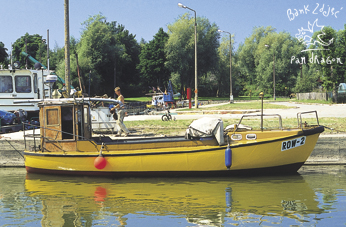|
 A few words about
Rowy...
A few words about
Rowy...
|



|
The town of Rowy is located among pine forests, in the immediate
neighbourhood of the Słowiński National Park, on the left bank of river Łupawa,
which flowing through Gardno, finds estuary here to the sea, at the same time
determining entry to the port of Rowy (54°40'N 17°03'E). This makes a unique
microclimate and excellent conditions for rest and tourism. Rowy can boast of
beautiful broad, sandy beaches separated from the resort by a strip of sand
dunes grown over with dwarf pine and a picturesque port filled with colourful
fishing boats. Cliff coast can be admired to the west of the town, and mobile
dunes in the east - in the Słowiński National Park. Permanent inhabitants are
almost 400 persons mainly dealing with fishing and tourism. In Rowy worth seeing
is the neo-Roman church from the 1st half of the 19th century, made of granite
blocks, with a bell-tower. While walking in the streets of Rowy you can
also pay attention to typical houses (domy szachulcowe) originating from the
19th century. In Rowy angling competition is held, and proponents of nudism
gather here in the summer.
|
|
Important dates associated with Rowy
|
|




|
1282
- year of the first mention about Rowy, as a fishing harbor – document with the
name of the village, as Rou in which prince Mściwój II renovated the procedure
of conferring estate to the church of St. Stanisław in Gardno.
13th century
- the village was the sea harbour for the town of Gardna Wielka.
1390
- they say that at the port of Rowy called a vessel with the later king of
England Henry the 4th, who was on a voyage to Gdansk.
The village appears again in
15th
century
notes documenting the history of Pomeranian families von Zitzewitz, von
Stojentin, von Kleist.
1602
- wider information about the village, regarding rescript regulating duties of
the pastor.
1784
- 26 families were living here who subsisted on fishery.
1779
- in the local church the last homily in the Kaszub language was given.
20th century
- summer camp houses and holiday centres, pensions and recreational houses were
created here that for the vast part constitute the present buildings in the
village.
2003-
when deepening the port a few-metre-long boat originating from the 13th century
was found at the bottom of the port channel.
|
|
|
|
|
|